Do you have concerns about the ingredients in store-bought baby lotions? I know I do as a parent. All we want for our children is the best, particularly when it comes to the things that touch their fragile skin. Making your own homemade baby lotion is an excellent way to save money while having full control over the ingredients nourishing your baby’s sensitive skin. Today, I’ll share my favorite 3-ingredient recipe that is tried and true as part of my baby joy tips for natural skincare.
Why Make Your Own Baby Lotion?
Commercial baby products often contain preservatives, fragrances, and other potential irritants that can trigger reactions in sensitive newborn skin. When you make homemade baby lotion, you eliminate :
- Parabens and phthalates
- Synthetic fragrances
- Petroleum-based ingredients
- Artificial colors
By creating your own gentle formulation, you’re giving your baby’s skin exactly what it needs—nothing more, nothing less.
Advantages of Natural Ingredients for Baby’s Skin
Natural ingredients work with our baby’s skin barrier as opposed to disturbing it. The simple ingredients in this DIY baby lotion will provide:
- Hydration, but without clogging the pores of their skin
- Anti-inflammatory properties to decrease discomfort
- Vitamins to nourish developing skin
- A light barrier from environmental factors

The Perfect 3-Ingredient Homemade Baby Lotion Recipe
This simple baby lotion recipe requires only three natural ingredients that work together to create a perfect moisturizer for your baby’s sensitive skin.
Ingredients You’ll Need
- 1/2 cup organic, cold-pressed coconut oil
- 1/4 cup shea butter (unrefined, raw)
- 2 tablespoons sweet almond oil or olive oil
That’s it! No preservatives, no fragrances, no complicated chemical compounds—just pure, natural goodness.
The Science of Each Ingredient
Coconut Oil : Contains lauric acid which has antimicrobial properties that help protect your baby’s skin from potentially harmful infections and building a moisture sealing barrier.
Shea Butter : Rich in vitamins A, E and F, this dense butter is an intense moisturizer that does not block pores and it allows skin healing to your minor irritations.
Sweet Almond/Olive Oil : Contains vitamin E and essential fatty acids to protect and nourish developing skin cells. This creates a silky, penetrating lotion that absorbs quickly into the skin.
Baby Lotion Preparation Guidelines
Creating homemade wedding gift baby lotion is much easier than you think! You do not need any special equipment, just follow these steps :
Get your tools in order : You need a small saucepan, a heat-safe glass bowl, a whisk and a sterilized storage container.
Make a double boiler : Fill the saucepan with water about 2 inches deep and place the glass bowl on top (make sure it does not touch the water).
Melt : Put the coconut oil and the shea butter in the bowl and heat it gently until melted.
- Add your liquid oil : Remove from the heat and stir in your liquid oil (sweet almond or olive oil).
Cool and whip : Allow the mixture to cool, about 30 minutes or until the edge starts to solidify, then whip the mixture until fluffy and/ or lotion-y.
Store : Put it into your sterilized container and store at room temperature for up to 3 months.
Troubleshooting Tips for Perfect Consistency
- Too runny? Your environment might be too warm. Place the mixture in the refrigerator for 10-15 minutes, then whip again.
- Too solid? Add an extra teaspoon of liquid oil and whip thoroughly.
- Grainy texture? You may have overheated the shea butter. Remelt completely and cool more slowly.
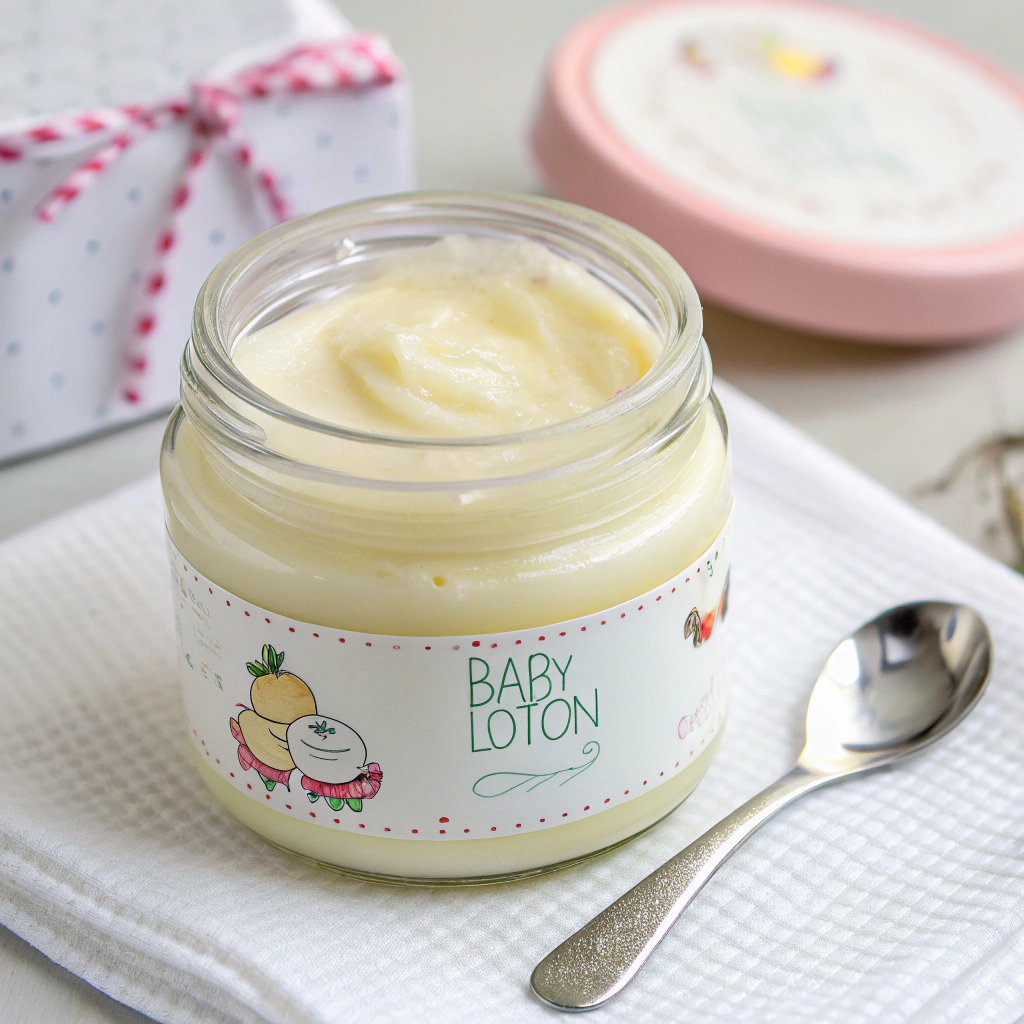
How to Use Your Homemade Baby Lotion
One of the best tips I can give that will add more joy for you and your baby, is knowing how to use your natural creation that you made above. Use your homemade baby lotion :
- After bath time while skin is still slightly damp
- At the time of baby massage (and for bonding and circulation benefits)
- On dry patches or minor irritations
- Daily as part of your baby’s daily skincare routine
Recommended Methods for Use
- Use a small amount—less than what you would use if you were applying lotion
- Warm it up between your fingers to make it more comfortable for baby
- Vigorously massage into skin with a circular motion
- Focus on the driest areas (elbows, knees, cheeks)
Storing and Preserving Your Homemade Baby Lotion
Because you’re not using any commercial preservatives, how you store your DIY baby lotion is really important :
- Store in a cool, dry place away from direct light
- Remove product with clean hands of a small spatula
- Look for any changes in smell or appearance
- Make small batches to keep the product fresher
Conclusion
Making a homemade baby lotion is not just about combining ingredients without harmful chemicals — it is also about an age-old practice of caring for our babies with simple, pure ingredients from the earth. This 3-ingredient recipe is gentle and offers the body and skin of your baby good protection, plus you feel good knowing what touches them on a daily basis. These baby joy tips for natural skincare add to creating a reliable health foundation for your child.
Why not give this simple baby lotion recipe a try today? Your baby’s skin will be thanking you! You might even make more to share with the whole family! Leave a comment below or tag us in your DIY baby care creations on social media!
Frequently Asked Questions
How long does homemade baby lotion without preservatives last?
Homemade baby lotion may last 2-3 months if stored in a clean air-tight container. Room temperature is best to store your lotion in a cool dry place free of direct sunlight. Just remember to check for changes in smell, color, and/or texture before using your product.
Can I use this homemade baby lotion on newborns?
Yes, this gentle formula is appropriate for newborn skin, but always conduct a patch test first. Apply a small amount to a tiny area and wait 24 hours to ensure no reaction occurs.
Is it a good recipe for babies with eczema?
Many parents use things like shea butter and coconut oil to relieve eczema symptoms and have had good effects. Every baby is different so please consult your pediatrician. If your baby seems to be sensitive to coconut oil, it may be best to leave it out of the recipe.
Can I put essential oils in this homemade baby lotion recipe?
Generally, essential oils are not recommended for babies under 6 months. For older babies, it would depend on the specific essential oil and very diluted amounts. ALWAYS check with a health care provider before incorporating any essential oils.
What is the correct way to apply homemade baby lotion?
Apply a small amount to your hands first, rub your hands together gently to warm between your palms, and then rub it on your baby using circular motions after a bath when baby’s skin is still slightly damp.
Is it normal for homemade baby lotion to change consistency with temperature?
It is normal. If you used coconut oil in the recipe it will change consistency if the temperature in your room fluctuates too much, in which case you should know coconut oil begins to solidify below 76°F (24°C). This is normal and does not affect the efficacy of the lotion!
How can I tell if my homemade baby lotion has spoiled?
Your lotion should be discarded if it has an off-odor, changes color, separates (not just emulsion separation), or shows any signs of mold.
Can I use refined coconut oil instead of unrefined?
Refined coconut oil will work, but unrefined (virgin) coconut oil is less processed and retains more of its natural helpful properties, and is probably better to use for baby skin care.
What can I do if my baby has a nut allergy, can I still use this recipe?
If your baby has a nut allergy, you can use olive oil, jojoba oil, or sunflower oil instead of the sweet almond oil. Shea butter should be considered a tree nut product, so you should talk to your pediatrician before use.
Would this lotion help ease cradle cap?
While it is intended primarily as a moisturizer, parents have said this lotion’s natural oils soften the scales of cradle cap when massaged into the scalp gently before washing.
Why should I make a lotion rather than just use plain coconut oil?
This lotion uses the benefits of multiple ingredients for extra moisture retention and skin nourishment while having a whipped texture easy to evenly distribute than solid coconut oil.
Is this homemade baby lotion cloth diaper-safe?
Yes, used in moderation and absorbed well before diapering this lotion should not affect absorbency of cloth diapers like some petroleum-based products.
How can I make this lotion more spreadable in cold weather?
If your lotion becomes too firm in winter, whip in an additional teaspoon of liquid oil (olive or sweet almond) to maintain a creamier consistency.

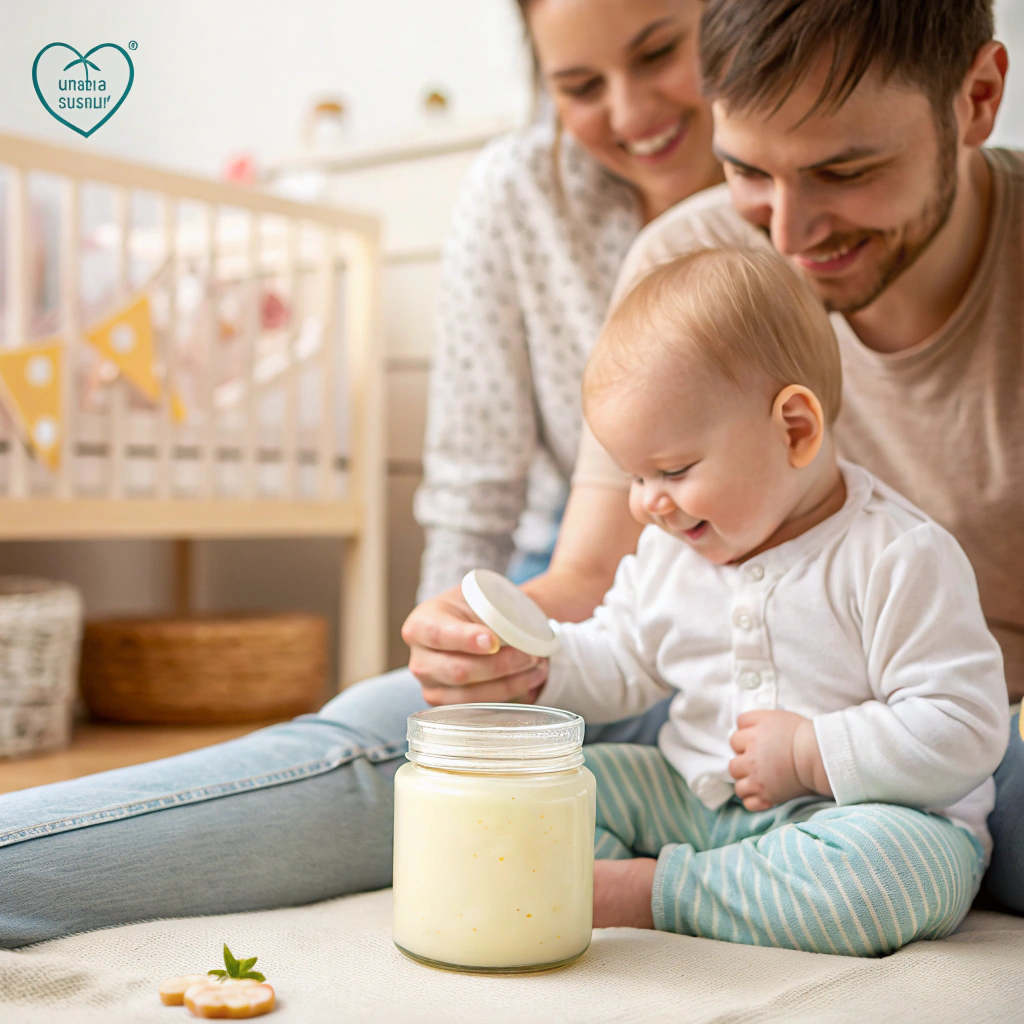
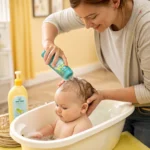

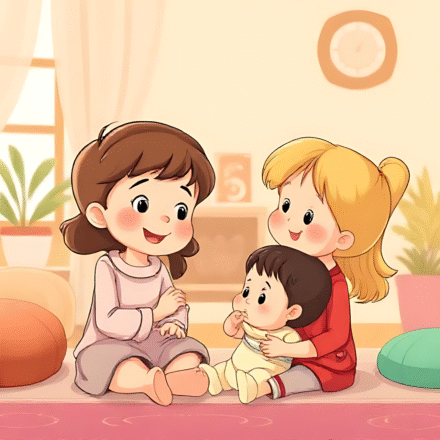
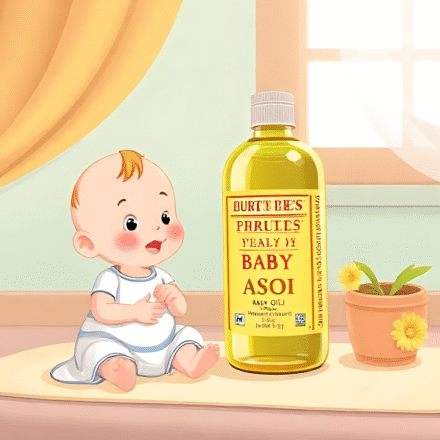
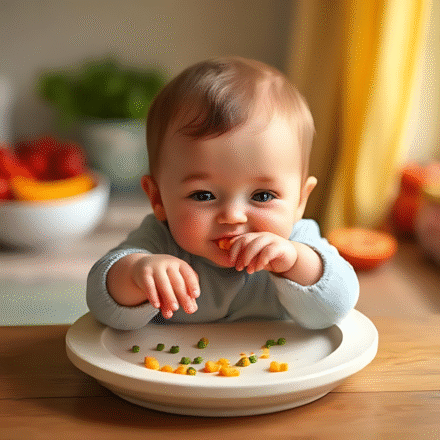

Leave a Comment